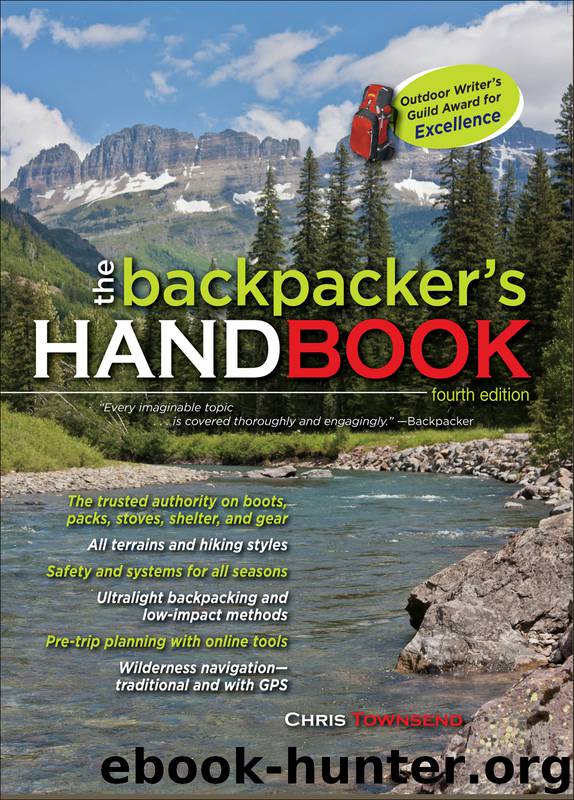The Backpacker's Handbook by Chris Townsend

Author:Chris Townsend
Language: eng
Format: epub
Publisher: McGraw-Hill Education
Published: 2012-03-22T04:00:00+00:00
Construction
The method used to hold fill inside affects the warmth of a sleeping bag. Down fill has to be held in chambers, which give the familiar ringed or ribbed look, to keep it evenly distributed throughout the bag. To create these chambers, the inner and outer fabrics are attached in sections. The simplest and lightest way of doing this is with straight-through or sewn-through stitching (also known as quilting). This method is adequate only for bags designed for above-freezing temperatures because heat escapes through the stitch lines and cold air can blow in through them. Most of the lightest bags use sewn-through stitching.
To cut this heat loss, the inner and outer shells can be connected by short walls of fine netting, called baffles, to make rectangular boxes—hence the name box-wall construction. If the walls are angled (offsetting the top and bottom stitches), it is called slant-wall construction; if they’re angled away from each other it’s trapezoidal construction. In V-tube or overlapping-tube construction the baffles form triangular compartments. All cold-weather down bags use some type of walled construction. Chambers should have enough down in them so they bulge slightly, creating that familiar well-padded look. If the down can move much in the chambers, it may migrate to the corners or to one side, leaving a cold spot.
Download
This site does not store any files on its server. We only index and link to content provided by other sites. Please contact the content providers to delete copyright contents if any and email us, we'll remove relevant links or contents immediately.
In a Sunburned Country by Bill Bryson(3451)
Annapurna by Maurice Herzog(3398)
How to Read Nature by Tristan Gooley(3213)
Dangerous Girls by Haas Abigail(2923)
SAS Survival Handbook by John 'Lofty' Wiseman(2634)
The Lost Art of Reading Nature's Signs by Tristan Gooley(2586)
In the Woods by Tana French(2497)
The Stranger in the Woods by Michael Finkel(2371)
Food and Water in an Emergency by Food & Water In An Emergency(2307)
Guns, Germs and Steel by Diamond Jared(2239)
Everest the Cruel Way by Joe Tasker(2210)
Wild: From Lost to Found on the Pacific Crest Trail by Cheryl Strayed(2178)
Backpacker the Complete Guide to Backpacking by Backpacker Magazine(2152)
Trail Magic by Trevelyan Quest Edwards & Hazel Edwards(2106)
Sea Survival Handbook by Keith Colwell(2081)
Ultimate Navigation Manual by Lyle Brotherton(2081)
Welcome to the Goddamn Ice Cube by Blair Braverman(1933)
Birds of the Pacific Northwest by Shewey John; Blount Tim;(1902)
The Last Flight by Julie Clark(1880)
